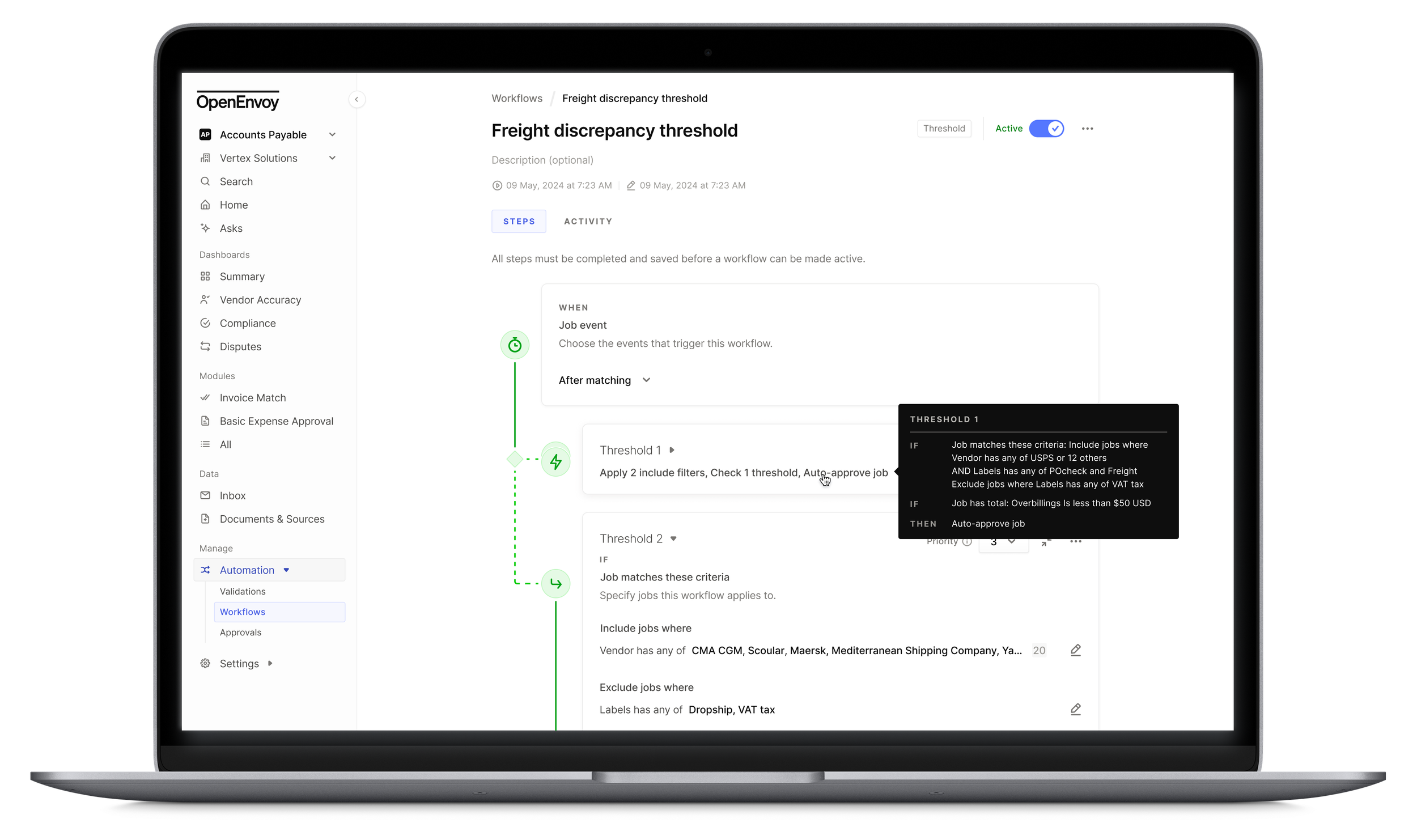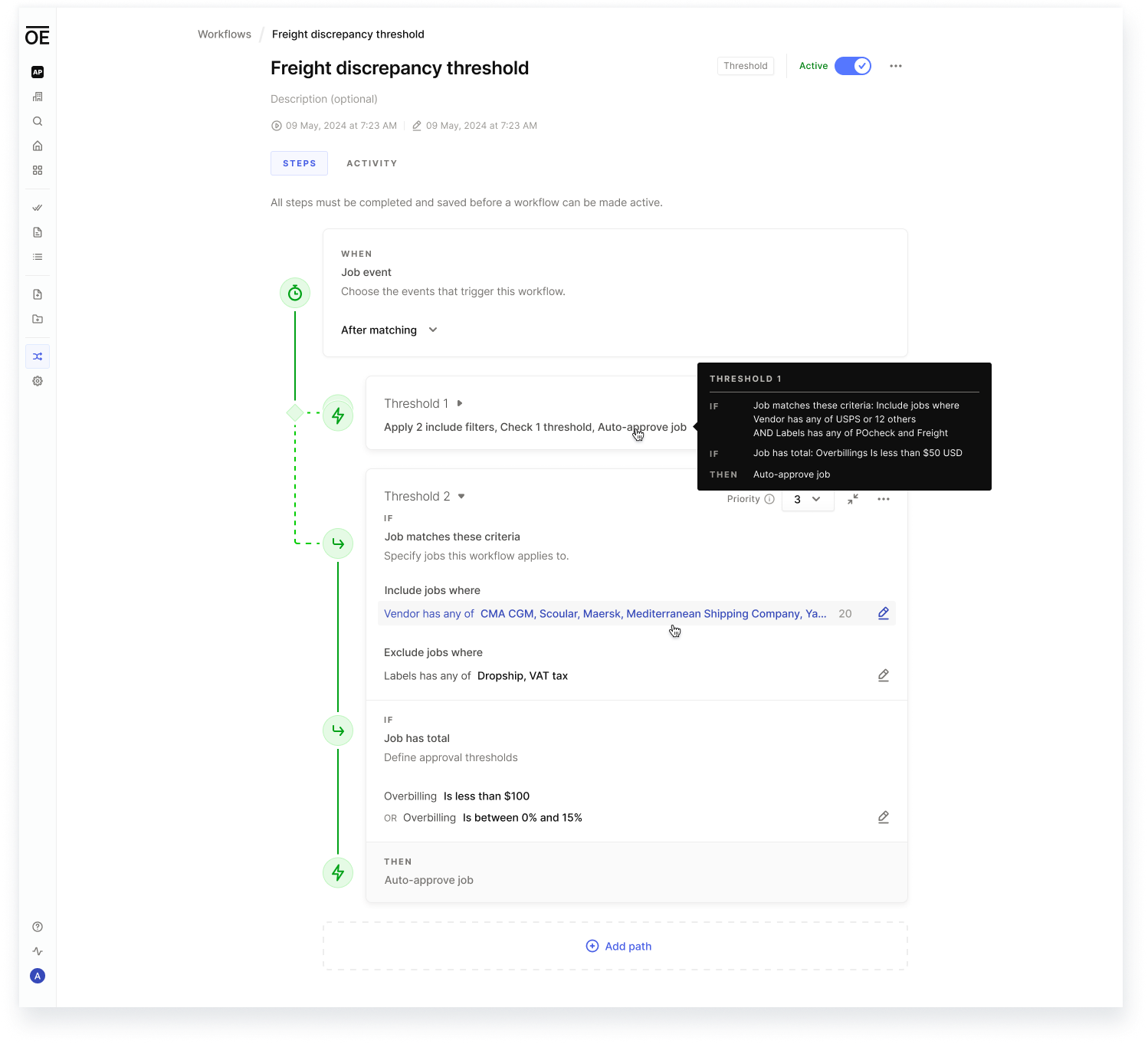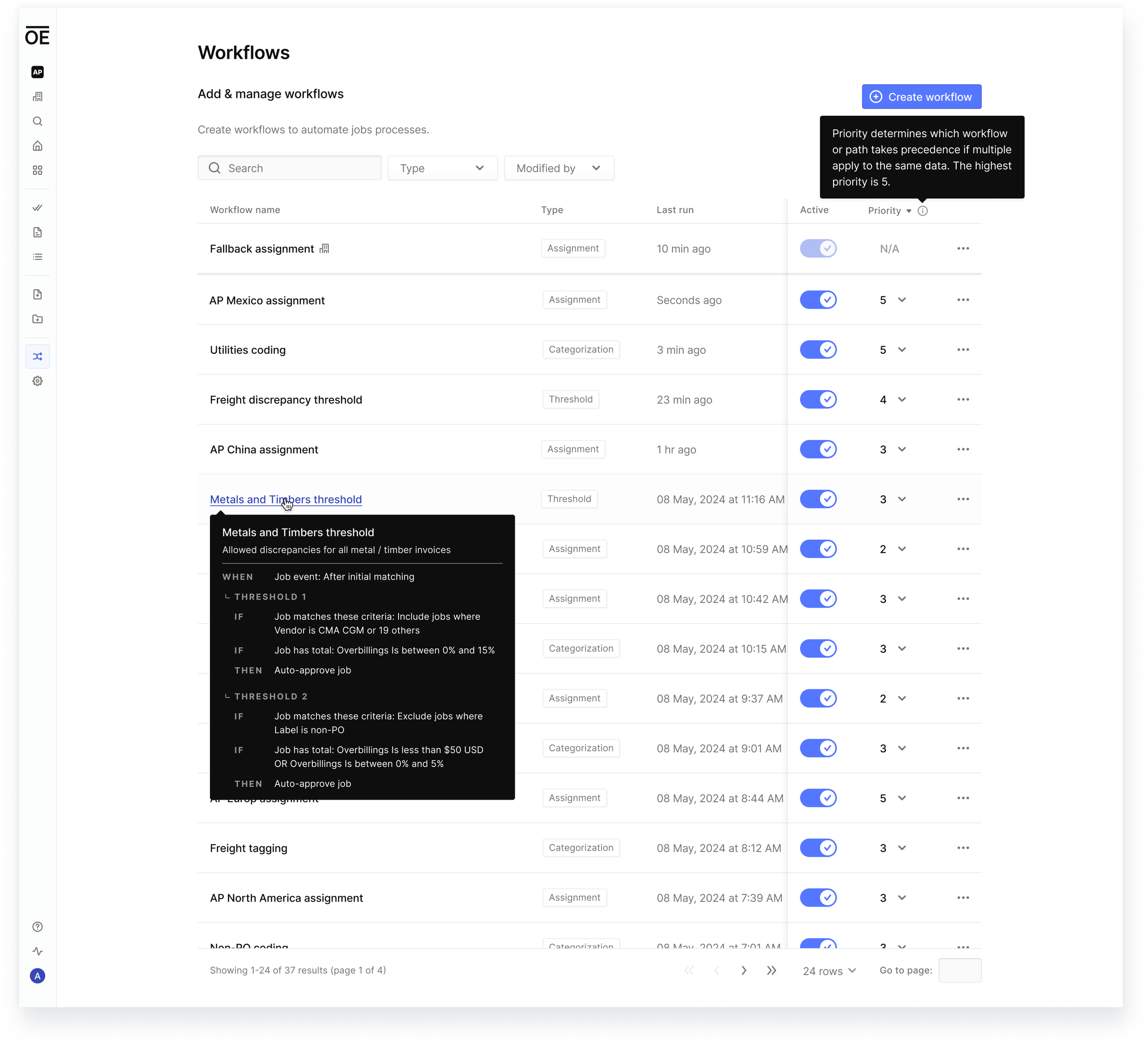Improving A Workflow Builder:
Smart Fixes Over Redesigns
An accounts payable clerk encounters small discrepancies on almost every line of an invoice compared to the purchase order. On closer inspection, each discrepancy is actually a rounding issue. The user gets frustrated after reviewing numerous similar issues in their large queue of invoices.
Project overview
OpenEnvoy’s workflow automation feature faced significant usability challenges—each condition required a separate, linear workflow, making it cumbersome to manage. Additionally, there was no way to resolve race conditions if they arose, posing a high risk for users and the business. While a full redesign with this functionality was on the roadmap, rebuilding the workflow engine was a significant undertaking. Combined with other business priorities, a full redesign simply wasn’t the right approach.
Instead, I focused on designing a more robust UI solution within existing constraints, collaborating closely with engineering to add functionality without overhauling the system. The resulting updates not only improved usability but also enhanced scalability—reducing the number of workflows by 2–3x for most customers—while mitigating tail risk.
See below for a teaser of the solution. Please reach out to learn more.
Image 1, Final Design – Enhanced Workflow Builder: Introduced support for multiple filter logic paths, reducing the number of workflows needed. Leveraged progressive disclosure to streamline the UI, making complex configurations more manageable without overwhelming users.
Image 2, Final Design – Updated Workflow List: Incorporated workflow prioritization and logic branching into the list view. Tooltip previews give quick insight into branching logic, and enabled in-list prioritization edits to help users proactively prevent race conditions.



